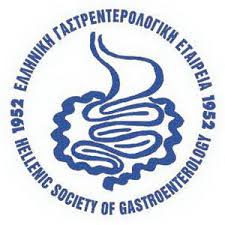SUMMARY
Glucagonomas are rare endocrine pancreatic tumors manifested
by a well-known clinical syndrome. They may occur
either sporadically (87%) or as part of multiple endocrine
neoplasia syndrome type 1 (MEN 1) (13%). Tumors, with
some rare exceptions, are located exclusively in the pancreas
(mainly in the tail, that is at the distribution site of
the glucagon-secreting A cells) and secrete excessive
amounts of glucagon. They are usually large and solitary.
In the majority of the reported cases, glucagonomas are
malignant and there is a close correlation between tumor
size and malignancy. Liver and lymph nodes are common
sites of metastases. Both sexes appear to be affected with
equal frequency and the average age at the time of diagnosis
is 52.5 years. Clinical manifestations include a skin rash,
termed necrolytic migratory erythema, (although characteristic,
it is not pathognomonic, since similar lesions have
been reported in other situations), glossitis/stomatitis/chelitis,
weight loss or cachexia often associated with anorexia
and thromboembolic problems. Diarrhea, ophthalmic, neurologic
or psychiatric manifestations have also been reported.
Hyperglycagonemia, diabetes or glucose intolerance
(73.3%), hypoaminoacidemia (41.2%), normochromic normocytic
anemia (33-85%) and often elevated sedimentation
rate are the major biochemical findings. Elevated levels of
other polypeptide hormones have also been reported. Chronic
hyperglycagonemia that produces hypoaminoacidemia, perhaps
in combination with other non-known tumor products
or metabolic disturbances are responsible for the skin eruption.
The diagnosis may be delayed for many years and will be advocated in patients with unexplained chronic dermatitis,
particularly if associated with buccomucosal inflammation,
diabetes or glucose intolerance, weight loss or
unexplained thomboembolic episodes. The existence of hyperglucagonemia
(>1000 mg/ml) may establish the diagnosis.
The localization of tumor or metastases may be made
by imaging methods (mainly be endoscopic U/S and angiography)
or by surgical exploration. Surgery (enucleation
of the tumor, distal pancreatectomy, major pancreatic resection,
debulking of unresectable or metastatic disease)
is the treatment of choice. Embolization of hepatic artery,
chemotherapy or somatostatin analogues (octerotide or lanreotide)
are the alternative solutions. The prognosis, despite
the malignant nature of the tumor, is relatively good,
due to its slow growth. The 10-year survival rate is 51.6% in
patients with metastases and 64.3% in those without metastases.
(EN)

